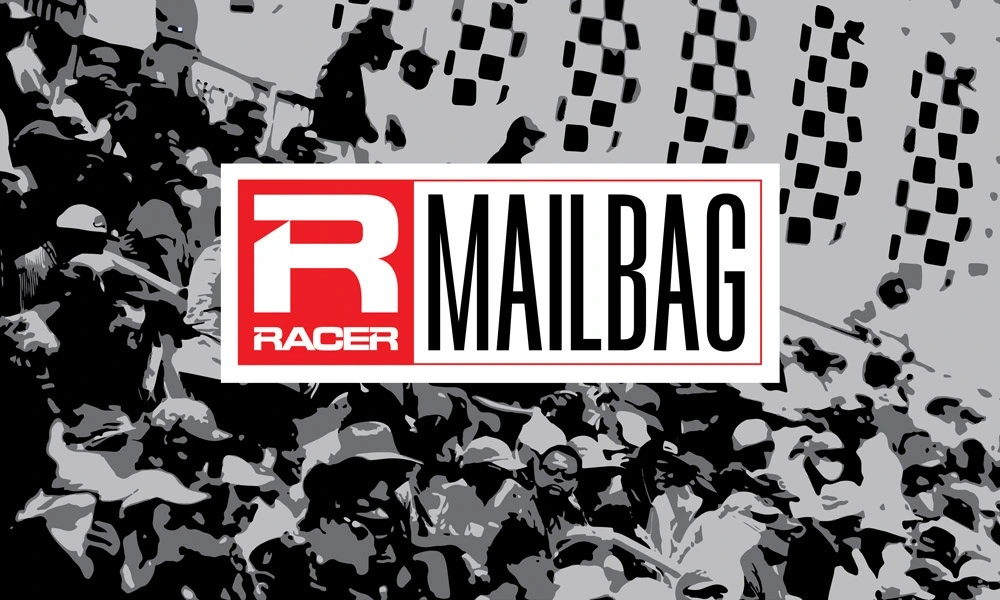Welcome to the RACER Mailbag. Questions for any of RACER’s writers can be sent to mailbag@racer.com. We can’t guarantee that every letter will be published, but we’ll answer as many as we can. Published questions may be edited for length and clarity. Questions received after 3pm ET each Monday will appear the following week.
Q: I was thinking about Honda and IndyCar, noting that Penske and Chevrolet are apparently silent about the prospect of losing Honda, and there’s all this talk about maybe a spec engine would be better than engine competition; and suddenly I was hit by a terrible conspiracy theory:
The spec engine that’s being discussed would be from Ilmor, which makes the “Chevrolet” engines that are currently in the cars. Who owns Ilmor? Roger Penske, who also owns IndyCar. So he would not only do away with an engine competitor in the racing series, but also, all of the money from engine leases would flow to one of his companies. Obviously simpler and easier, but opposite to the direction taken successfully by IMSA. Mr. Penske is acknowledged as a master manager, leader and organizer, and he loves an unfair advantage, but I have never heard anyone say he was a brilliant marketer.
Big Sur Ridgewalker, Big Sur, CA
MARSHALL PRUETT: This has the feel of an Oliver Stone movie where lots of conspiratorial questions get added up to equate to a likely misdeed. Truth is, American Honda/HRC US are saying that they’d welcome taking a big slice out of their annual racing budget by buying or leasing a spec-ish motor instead of spending zillions to do it themselves.
And since Honda/HRC US has the deepest respect for Ilmor as a rival and collaborator, it makes more sense for Honda/HRC to suggest Ilmor — the only other expert in the world at making championship-winning 2.2-liter turbocharged V6 IndyCar engines — is the best fit for the job.
Let’s also be honest here: A proposed spec supply suggestion from Honda/HRC for the company Penske co-founded and co-owns is one where everyone knows full well that it will benefit Penske’s bottom line. The thing being served up as a possible conspiracy is actually the exact thing Chevy/Ilmor’s main rival would welcome, so that probably makes it something other than a dastardly plan Penske devised.

Q: A few months ago, I came across a post you retweeted from Dawn Treader Performance and their restoration of the Penske PC26. Since then, they have had a couple of excellent videos of the car being run on an airport in the UK. What a great sound and look; I was immediately transported back to my childhood in the 1990s seeing this car run in person at Michigan, Cleveland and Nazareth.
What is it like, from a parts availability and cost standpoint, to restore a ’90s-era CART car? Is there much opportunity for an interested person to pursue an endeavor, or do teams tend to hold on to their stock of old cars? And where might these cars be seen running again? It looks like track days shy away from open-wheelers, so perhaps vintage festivals? I can only come across a couple of YouTube clips from a Goodwood Festival where a PC22 was tearing it up.
Chris Reardon, Washington, DC
MP: Plenty of open-wheelers at SCCA and NASA club racing events, and the same is true for vintage series that welcome them (some series are dedicated to sports cars or stock cars, only). There is a sore lack of modern-ish Indy cars at vintage events, which I hope gets resolved sometime soon. The HMSA vintage organization will be running a field of vintage Indy cars during the Long Beach GP in April, so if your calendar and bank account will allow, it’s a perfect excuse to come and watch IndyCar, IMSA, and vintage Indy cars in action in SoCal.
My friend Patrick Morgan, whose Dawn Treader Penske you referenced, was kind enough to help with some insights:
“A difficult question to answer, and everyone in the restoration business has to grapple with them. There are many cars out there in various states of completeness. Parts availability can depend on the specific chassis – for example there were many 1997 Reynards around, less so with Lolas for that year, but by 2002 the field was almost all Lolas so there more to be found around for those cars. Engine-wise, Cosworths are pretty much available with electronics to support them; early Ilmor/Chevy engines are out there and a very few later Ilmor-Mercedes engines. I have yet to see a complete running Honda and only a couple of Toyota-engined cars running.
“Cost-wise, it really depends on what you start with and what your end point is. There is quite a cost difference between simply running a car and having a race-ready car in terms of, for example, a fuel cell being certificated, dampers rebuilt, etc.
“It’s all expensive and you’ve got to want to do it, but it’s achievable and not as painful in the longer term as an F1 car. The duty cycle on the engine for an Indy car is 600 miles at full throttle rather than 350km with varying throttle for an F1. Knock 200rpm of the rev limit and reduce the boost a tad and it’s going to last longer than 600 miles. So for the performance, it’s much more cost effective. And better looking… just my view, of course!”
